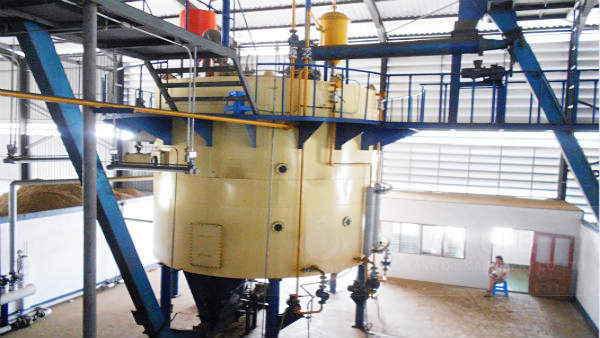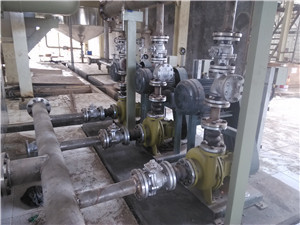
In the soybean oil industry, choosing the right oil extraction process is crucial for plant efficiency, product quality, and long - term sustainability. This article delves into the two primary extraction methods: mechanical pressing and solvent extraction, providing comprehensive insights to help decision - makers and technical personnel make informed choices.
The production of soybean oil involves multiple steps, including soybean pre - treatment, oil extraction, crude oil filtration, multi - stage refining, and by - product utilization. Pre - treatment is the first and vital step. It includes cleaning, dehulling, and flaking the soybeans. Proper pre - treatment can improve the efficiency of subsequent extraction processes. For example, dehulling can reduce the non - oil components in the soybeans, thus increasing the oil yield.

Mechanical pressing is a traditional method that uses physical force to extract oil from soybeans. The principle is simple: by applying pressure to the soybeans, the oil is squeezed out. The equipment required for mechanical pressing mainly includes screw presses. These presses have different capacities, usually ranging from 1 - 100 tons per day for small to medium - sized plants. The energy consumption of mechanical presses is relatively high, about 50 - 100 kWh per ton of soybeans processed. However, the advantage is that it produces a more natural - tasting oil with less chemical residue.
Solvent extraction uses a solvent (usually hexane) to dissolve the oil in soybeans. The process involves soaking the soybeans in the solvent, then separating the oil - solvent mixture and evaporating the solvent. The key equipment for solvent extraction includes extractors and evaporators. The energy consumption of solvent extraction is relatively low, around 20 - 50 kWh per ton of soybeans processed. The oil yield is higher, reaching up to 95% - 98% compared to 80% - 85% in mechanical pressing. But the oil may require more refining steps to remove the solvent residues.
| Extraction Method | Energy Consumption (kWh/ton) | Oil Yield (%) | Advantages | Disadvantages |
|---|---|---|---|---|
| Mechanical Pressing | 50 - 100 | 80 - 85 | Natural - tasting oil, less chemical residue | High energy consumption, lower oil yield |
| Solvent Extraction | 20 - 50 | 95 - 98 | High oil yield, low energy consumption | Requires more refining, solvent residues |
The choice of extraction method significantly affects the quality of the soybean oil. Mechanically pressed oil has a rich flavor and is often preferred in the market for high - end products. It contains more natural antioxidants and nutrients because it is less processed chemically. On the other hand, solvent - extracted oil may have a more neutral flavor, which is suitable for some industrial applications. During the refining process, both types of oil need to go through degumming, neutralization, bleaching, and deodorization steps. However, solvent - extracted oil may require more strict refining to meet the quality standards due to the presence of solvent residues.

For small - scale soybean oil plants (less than 10 tons per day), mechanical pressing is often a more suitable choice. The initial investment for mechanical presses is relatively low, and the operation is simple. It also meets the local market demand for natural - tasting oil. For medium - to large - scale plants (more than 100 tons per day), solvent extraction is more cost - effective. The high oil yield and low energy consumption can bring significant economic benefits in large - scale production.
Mechanical pressing is more environmentally friendly in terms of reducing chemical emissions. Since it does not use solvents, there is no risk of solvent leakage and environmental pollution. However, the relatively low oil yield may require more soybeans to be processed to obtain the same amount of oil, which may put more pressure on agricultural resources. Solvent extraction, although having a higher oil yield, needs to pay attention to the proper handling of solvents to avoid environmental pollution. Recycling and proper disposal of solvents are necessary to ensure sustainable production.
After oil extraction, the remaining soybean meal is a valuable by - product. It can be used as animal feed, and its protein content is usually around 40% - 50%. Proper storage and packaging of soybean oil are also important. The oil should be stored in a cool, dark place to prevent oxidation. Packaging materials should be chosen carefully to avoid contamination and maintain the quality of the oil.

In conclusion, soybean oil plants need to comprehensively consider various factors such as production scale, product quality requirements, energy consumption, environmental impact, and cost when choosing between mechanical pressing and solvent extraction. Our company has rich experience in the soybean oil industry and can provide professional solutions to help your plant optimize the production process, improve efficiency, and enhance product quality. Click here to learn more about our customized solutions!
We encourage you to share your experiences and insights in the comments below. Have you faced any challenges in choosing the extraction process? What are your thoughts on the future development of the soybean oil industry?

